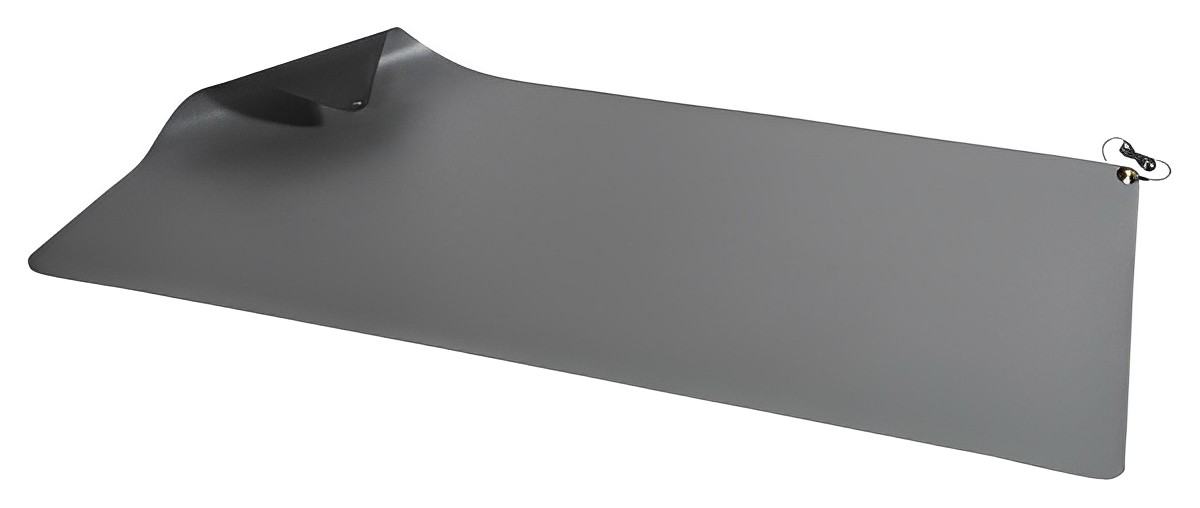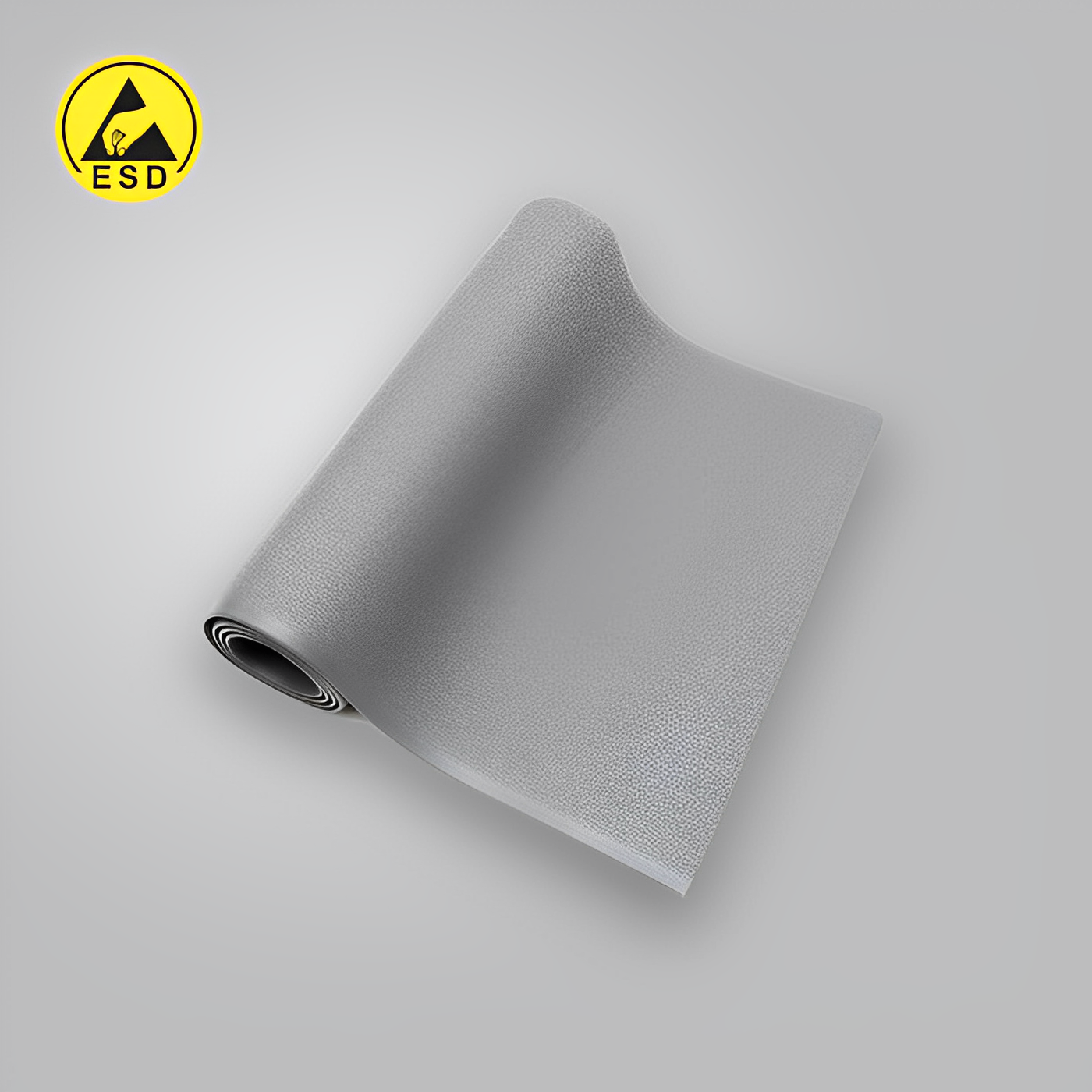If production is required in areas free from static electricity, the most important action in this area is to cover the work floor with products such as PVC or epoxy with antistatic and esd properties.
According to EN-61340-5-1 General standards, the materials to be used for this process must have antistatic properties and grounding must be made in accordance with the ESD property with the right engineering.
If it is necessary to work with PVC material, the surface resistance of the material should be less than 109 omega, you can use a two-layer product or a single-layer product. The biggest advantage of two-layer products is that the grounding of static electricity will be exponential thanks to the resistance difference between the resistance value of the outer surface and the resistance value of the lower surface, while the discharge will take place in the form of linear discharge in single-layer products.
In PVC applications, it is necessary to make a Faraday cage with copper tapes for the substrate, the shape of this cage is calculated according to the area to be worked. It is essential that the adhesive to be used in the adhesion of PVC must be conductive adhesive, so that in case of possible high currents (max.300mA), discharge will occur without damaging the system grounding. Working with tile pvc or roll pvc does not change this situation, if you do not have a clenaroom room at the same time, we recommend you to work with roll pvc. In practice, grounding points must be determined, and grounding terminals must be placed every 10 meters or more with mathematical calculations.
After the application, surface resistance (Rs) and permeability resistance (Rg) of the material should be measured with surface resistance measurement devices, you should confirm the process by checking whether the result conforms to the declaration of the pvc manufacturer used and whether it meets the values described in the EN-61340-5-1 standard.




